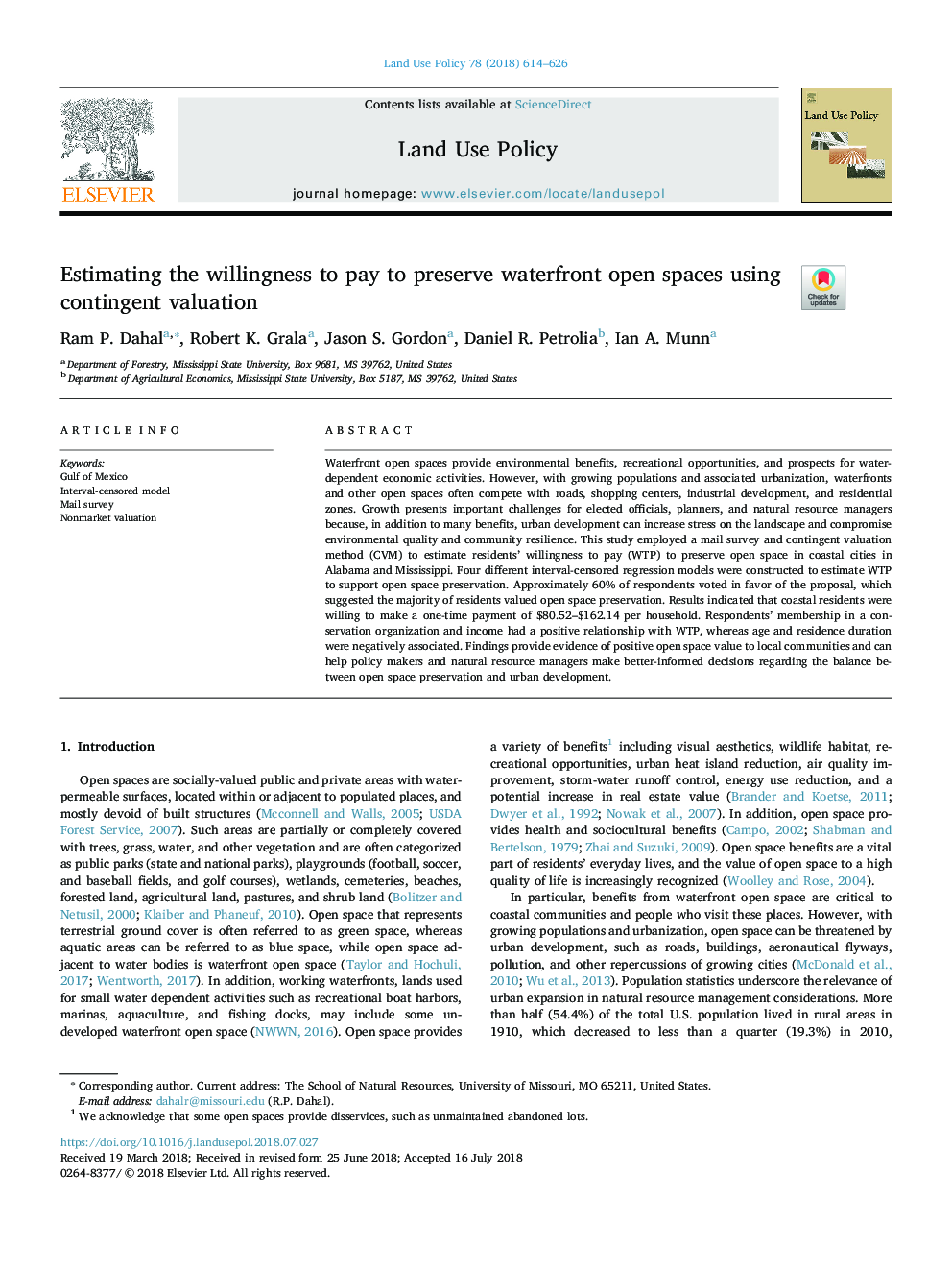| Article ID | Journal | Published Year | Pages | File Type |
|---|---|---|---|---|
| 6546078 | Land Use Policy | 2018 | 13 Pages |
Abstract
Waterfront open spaces provide environmental benefits, recreational opportunities, and prospects for water-dependent economic activities. However, with growing populations and associated urbanization, waterfronts and other open spaces often compete with roads, shopping centers, industrial development, and residential zones. Growth presents important challenges for elected officials, planners, and natural resource managers because, in addition to many benefits, urban development can increase stress on the landscape and compromise environmental quality and community resilience. This study employed a mail survey and contingent valuation method (CVM) to estimate residents' willingness to pay (WTP) to preserve open space in coastal cities in Alabama and Mississippi. Four different interval-censored regression models were constructed to estimate WTP to support open space preservation. Approximately 60% of respondents voted in favor of the proposal, which suggested the majority of residents valued open space preservation. Results indicated that coastal residents were willing to make a one-time payment of $80.52-$162.14 per household. Respondents' membership in a conservation organization and income had a positive relationship with WTP, whereas age and residence duration were negatively associated. Findings provide evidence of positive open space value to local communities and can help policy makers and natural resource managers make better-informed decisions regarding the balance between open space preservation and urban development.
Related Topics
Life Sciences
Agricultural and Biological Sciences
Forestry
Authors
Ram P. Dahal, Robert K. Grala, Jason S. Gordon, Daniel R. Petrolia, Ian A. Munn,
